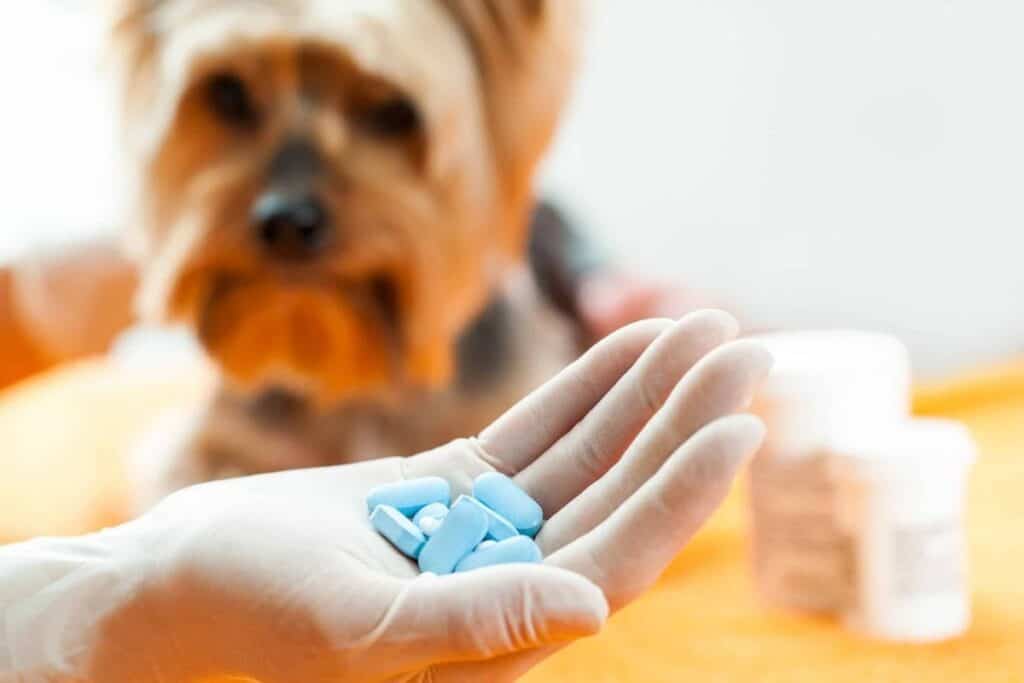Have you ever been chatting with your vet about your pet, only to notice a hint of side-eye or a pause before they answer?
It’s not because we don’t like you—we promise!
Most of the time, it’s because you’ve mentioned something that might not be as helpful for your pet as you think.
As a veterinarian, I know pet parents want the best for their furry family members. But sometimes, well-intentioned choices can make it harder for us to give your pet the care they deserve. From skipping meds to trusting internet cures, here are some common things owners do without realizing they may be working against their pet’s health—and what you can do instead.
1. Telling us you’re using expired meds from 7 years ago
We’ve all heard it:
“I had some leftover antibiotics from when my dog had that ear infection in 2018, so I just gave him those.”
Please don’t. Medicine goes bad over time and may not work the way it should. Some can even be unsafe once they’re old. On top of that, what you have left over might not be the right medicine for your pet’s current problem.
If your pet is sick, the safest thing to do is schedule a checkup so if your pet needs treatment they can get the right prescription for what’s happening now.
2. Letting your pet run loose in the clinic
Just the other night, I had a client walk in carrying their cat in their arms. I’ve also seen cats show up in cardboard boxes and dogs trot right into a crowded waiting room with no leash.
I know it might seem harmless, but it’s a recipe for chaos. The lobby is full of animals—some sick, some scared, and some not great with other pets. One sudden noise or movement, and that loose cat or unleashed dog could bolt, get hurt, or trigger a fight.
3. Giving your pet 3 different names and using them all in the same visit
I get it. My own cat has two names. When she was a stray, we called her Krispie, but once she officially joined the family, she became Pandora—which is the name on all her medical records.
We love that you call your dog Mr. Pickle at home, Pickles when he’s being cute, and Richard when he’s in trouble—but when you use all three names with different staff members during one appointment, chaos ensues. We’re suddenly trying to find “Richard” for vaccines, “Pickles” is on the surgery board, and the front desk is asking if Mr. Pickle needs heartworm meds.
Please pick a name and stick to it…at least while you’re at the vet’s office.
4. Expecting human medicine rules to apply
I sometimes hear, “Why can’t you just call in something? My doctor does it for me.” But listen—your pet can’t sit on the exam table and tell me exactly what hurts or how long they’ve been feeling sick.
That’s why a physical exam is so important. Listening to the heart, checking the gums, feeling the abdomen—these clues guide us to the right diagnosis and treatment. Without them, we’re guessing, and guessing with medication can be dangerous. The wrong drug, wrong dose, or missing a hidden problem could put your pet at real risk.
I know it feels different compared to human medicine, but pets need that hands-on exam so we can keep them safe and give them the best chance to get better.
5. Skipping prescribed medications—then wondering why your pet isn’t better
If we prescribe a 10-day course of antibiotics and your dog only gets three because they “seemed better,” we’re starting back at square one. Infections don’t just vanish the moment symptoms improve—bacteria can linger, regroup, and sometimes come back even stronger. Stopping too early also increases the risk of antibiotic resistance, meaning the same drug may not work as well next time.
It’s not just antibiotics either. Pain medications, ear drops, thyroid pills, or heart meds all need to be given exactly as prescribed to work properly. Skipping doses or stopping early can delay healing, cause flare-ups, or even put your pet in danger.
If you’re having trouble giving a medication—maybe your cat has a radar for pills or your dog spits them out—call your vet. They may tolerate a liquid medication better, or maybe we can come up with a trick or alternative, than see your pet’s health slide backwards.
6. Restricting food and water because it’s inconvenient
This one can be tough to talk about, but I’ve had pet parents admit they hold back food or water so their puppy won’t make a mess or need as many potty breaks.
The problem is, puppies (and all pets) need regular meals and plenty of water to stay healthy. Growing bodies can’t go without it. Skipping water can quickly lead to dehydration, and that’s dangerous.
On top of that, puppies have tiny bladders. They physically can’t “hold it” for very long. As they grow and their muscles get stronger, they’ll be able to wait longer between potty breaks—but in the meantime, they’ll need to go often.
Withholding water isn’t just unfair, it can also cause urinary tract problems down the road. Potty training takes patience, but it’s part of raising a healthy dog.
7. Waiting weeks to bring your pet in
I often hear, “He’s been limping for a few weeks, but now he can’t walk at all.” The longer you wait, the worse things usually get. What might have been a mild sprain or small injury at the start can turn into something much more serious if it’s left untreated.
Getting care early usually means less pain for your pet, quicker healing, and yes—often a smaller vet bill too. When problems are caught early, we can treat them before they snowball into something bigger and harder (and more expensive) to fix.
I get it—life is busy.
Between work, kids, elderly parents, and school pickups, it can feel impossible to fit in a vet visit. I’m a parent too, so I completely understand how packed days can get. But many clinics offer the option to drop your pet off for part of the day. That way, the doctor can examine them between appointments, and you can pick them up later without missing work or rearranging your whole schedule.
If you notice your pet limping, skipping meals, or just not acting like themselves, don’t wait weeks hoping it will go away. Trust your gut and make the call.
8. Trying to Diagnose with Dr. Google
I love when pet parents want to learn more and stay informed—but Google doesn’t know your pet the way I do. Every dog or cat is different, and what you find online may not match your pet’s exact situation.
The tricky part is that a lot of pet health info online is outdated, misleading, or even dangerous. A harmless symptom in one pet could be serious in another, and vice versa. I’ve seen owners delay care or try unsafe “remedies” they found online, only for their pet to end up much worse.
By all means, do your research—but use it as a way to ask better questions, not as a replacement for an exam. The best plan will always come from a vet who knows your pet’s history, lifestyle, and specific needs.
9. Not Giving the Pre-Meds
I sometimes hear, “I didn’t give him the pre-meds, Doc. I didn’t want him to be sedated.”
For real – those medications aren’t meant to knock your pet out cold. They’re carefully chosen to take the edge off, so your dog or cat feels calmer and less anxious during the car ride and the vet visit.
When pets come in without their pre-meds, they’re often stressed, fearful, and much harder to handle safely. A nervous pet is more likely to panic, resist, or even bite—not because they’re “bad,” but because they’re scared. That stress makes the visit harder on them, on you, and on the vet team.
So if your vet prescribes pre-meds, go ahead and give them. Think of it as helping your pet have a smoother, less scary experience—not sedating them into a zombie. It’s truly a kindness for everyone involved.
10. Using home remedies without checking with us
I’ve seen it all—coconut oil rubbed on everything, essential oils diffused around pets, even garlic given for fleas. Just because something is “natural” doesn’t mean it’s safe. In fact, some of these remedies can actually do more harm than good.
Garlic, for example, is toxic to dogs and can damage their red blood cells. Certain essential oils can cause skin burns, breathing problems, or even organ damage if your pet ingests them. And while coconut oil isn’t poisonous, it can lead to stomach upset and doesn’t actually treat most of the things it’s used for.
I know it’s tempting to try quick fixes you see online, but your pet’s safety comes first. If you’re ever unsure, ask your vet before trying something at home. We can guide you toward safe, effective treatments that actually work.
11. Keeping a dog crated all day to avoid hair in the house
It’s normal to want a clean home, but locking your dog in a crate all day just to keep hair off the furniture isn’t the answer. Dogs need room to stretch, move, and interact with the world around them. Spending 90% of their day in a small space can lead to stress, anxiety, and even physical problems like stiff joints or weak muscles.
Crates are meant to be a safe, cozy spot for naps or short periods—not a full-time living space. A dog that’s crated too much is more likely to develop behavior issues, from barking and whining to destructive habits once they’re finally let out. And at the end of the day, it’s simply not fair to your dog.
A better option? Use the crate when you can’t supervise, but balance it with plenty of exercise, play, and cuddle time. Regular brushing and a good vacuum will do far more to keep hair under control than over-crating ever will.
The Bottom Line? We’re Here to Help—Not Judge
Veterinarians do this work because we truly care about pets and the people who love them. If we ever sound worried or firm, it’s not judgment—it’s because we want your pet to be healthy and safe.
Caring for an animal is a team effort—you, your pet, and your veterinary team all working together toward the same goal: giving your pet the best life possible.
If you’re ever unsure about something, please reach out. We’d always rather answer your questions early and help guide you than see your pet struggle later. You don’t have to figure it all out alone—we’re here for you, as part of your pet’s care team.

















Leave feedback about this